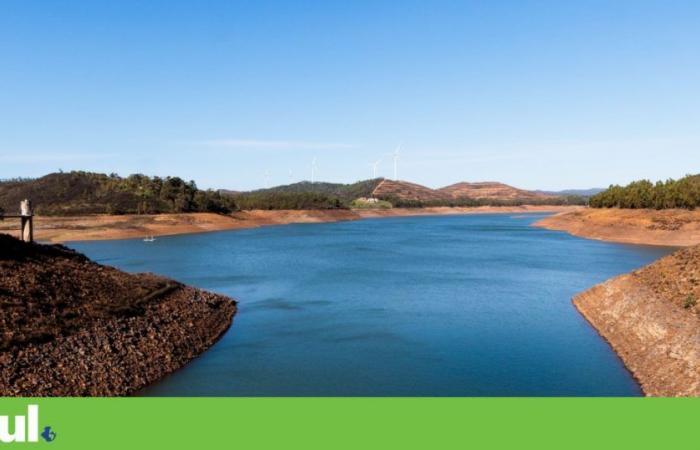“There is no hunger that does not give rise to plenty!” The proverb fits the current water storage capacity observed in public and private reservoirs in the north, center and also in the south of the country. The current reality contrasts with that which faced the rural world, a few months ago, buffeted by successive heat waves, and the consequent meteorological and hydrological drought, severe and extreme, in large areas of the national territory, with emphasis on Alentejo and Algarve.
In effect, the intense atmospheric precipitation caused by the depression Nelson left a storage level above 80% in 56 of the 82 national public reservoirs. Only a single dam, the Arade dam, in the basin with the same name, in the Algarve, is still in the red, but, most likely, it will no longer be in the red throughout the current week, due to the runoff that still flows into the reservoirs high volumes of water.
Below 50% there are only 11 reservoirs: 1 in the Tagus basin (Minutos – 46%); 2 in the Sado basin (Campilhas – 47%) and Monte da Rocha – 21%) which since 2019 remained in the red; Santa Clara reservoir (40%) in the Mira basin, supplying water to greenhouse crops in Odemira; in the Guadiana basin, the Beliche (39%) and Odeleite (47%) reservoirs; the problematic Arade basin where the only reservoir marked by the color red is found, Arade (17%) and Odelouca (41%).
In the Barlavento Algarve, the Bravura reservoir (21%), finally lives up to its name, by abandoning the red that made it stand out in the media universe as the most shocking testimony to the drought nightmare in Portugal. And, in the Eastern Algarve, the Beliche reservoir has 39% of its maximum storage capacity, but like other water reserves in the region, the volume of water they present is still far from guaranteeing the needs in agriculture, tourism and human consumption.
The announcement that Alqueva has reached the maximum filling level at 152 meters above sea level is expected at all times. There are 55 centimeters and 208 cubic hectometers (hm3) left for the water to cover the approximately 250 square kilometers, which is the area occupied by the Alqueva reservoir. At 3 pm on April 2nd, and from the Badajoz dam, 216 cubic meters per second (m3/s) were being delivered to Alqueva, via the Guadiana river. For three days, the large dam has received a constant volume of water, exceeding 200 m3/s.
Between the 25th and 31st of March, the depression Nelson left an increase of 350 hm3 in the 82 national public reservoirs. The volume stored, nationally and until March 31st, was 11,806 hm3, which represents 89% of the maximum capacity (13,299 hm3).
Iberian rivers
Good news also comes from Spain regarding the water reserves that are currently held in public dams built in the basins of the three large Iberian rivers. Thus, in the 18 dams installed in the Douro basin in Spanish territory, the total volume stored is 84%. The water reserves of the 48 dams located in the Tagus basin reach 76% and in the 35 dams in the Guadiana basin, the volume of water retained was, on April 1st, 47%. For the first time in two years, the 23 dams in the Guadiana basin in Spain have more water stored (4527 hm3) than the Alqueva dam (3942 hm3).
However, the Chança (50%) and Andévalo (30%) reservoirs, which are crucial for guaranteeing water resources in the Spanish province of Huelva, do not record increased gains with the passing of the depression. Nelson. The benefit was only residual.
The biggest contribution of depression Nelson it was given to the marshes of Doñana. At the beginning of spring, they were dry, which boded a dramatic outcome, especially for the birdlife. But, with the last rains, the lakes were flooded again.
The intense rains this Easter week revived the Guadalquivir River, whose basin has the lowest storage levels in the entire Spanish territory, around 30%.
Therefore, for 2024 some comfort margin is expected in access to water resources in most peninsular regions. But as has happened over the last few decades, the scenario can change in the space of a year, taking as a reference the high water consumption in agricultural and livestock activities. When there is an increase in water reserves, both clandestine irrigation and the expansion of irrigated areas nullify the safety margin in surface and underground reserves.
Tags: Nelson depression national public reservoirs red Water
--





